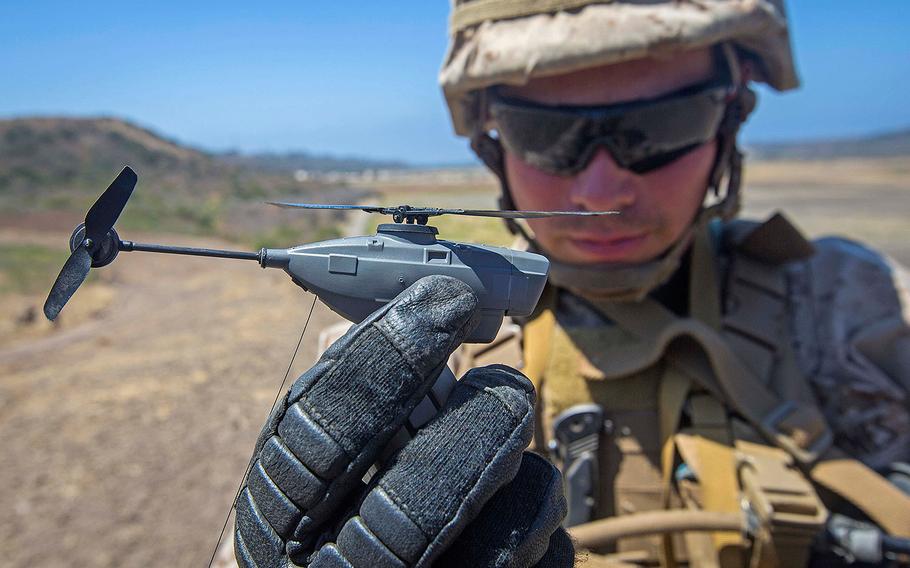The US Army is looking to quickly develop and deploy new “mini-drones” able to launch from helicopters to find enemy targets, operate under enemy fire, and send instant target coordinates and key surveillance details.
It is referred to as the “Air-Launched Effects” and these drones are intended to operate in a range of different capacities to include of course Intelligence, Surveillance, and Reconnaissance as well as counter-drone intercept.
They could even operate themselves as mini-drone explosive weapons in an attack mission.
The ALE program is broken up into distinct phases which rely upon cutting-edge and upgradeable mission computing, sensors, kinetic and non-kinetic effectors, and transport-layer networking technologies.
In 2020, the U.S Army awarded ten Air-Launched Effects Projects totaling $29.75 million, a service report said.
These ten projects are categorized into three Air-Launched Effects lines of effort: air vehicle, mission systems, and payloads.
The ALE air vehicle projects were awarded to Alliant Techsystems Operations, Raytheon Company, and Area-I Inc.
Each of these vendors is developing options intended to meet or exceed the Army’s requirements for speed, weight, power, and range, among other things.
Raytheon is offering an adaptation of its well-known Coyote Block 3 mini-drone. Coyote Block 3, a newer variant of the now operational Coyote Blocks 1 & 2, can leverage a variety of payloads to include non-kinetic interceptor technology to destroy enemy drone swarms or disable approaching threats.
“We have a mature, low risk solution. We leveraged our Coyote Block 3 and we will do a ground launch to demonstrate connectivity to an air vehicle and communicate through an unmanned network,” Abel Ghanooni, senior director for Short Range Air Defense and Rapid Development Programs for Raytheon Missiles & Defense said.
Along with providing the ALE air vehicle itself, Raytheon is also competing with a handful of industry bidders regarding potential “payloads” or sensor configurations for the ALE.
For the Army, Raytheon plans to deliver a ground and air-launched mini-drone ALE intended to open up new mission possibilities. The emerging technology will be demonstrated in Oct. 2021 at Dugway Proving Grounds, Utah, as part of an overall developmental effort.
“ISR is one piece of that mission. The demo we are working on is to meet the air vehicle requirements and draw from our ability to be modular and integrate new upgrades. Our goal is to be able to go at long ranges with the ability to be expendable,” Ghanooni said.
MORE ON THE TOPIC:






